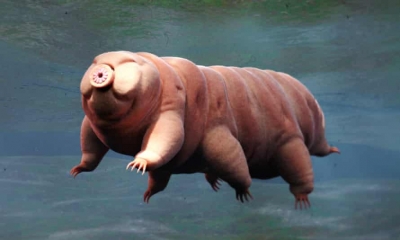
Tardigrades, also known as water bears, are microscopic, usually about 0.5 mm long. These water-dwelling, eight-legged micro-animals can survive extreme heat and cold, besides even radiation in space. They are often found on mosses and lichen. Did you know when short on water they can dry out for years and revive without any damage when reintroduced to water?
Tardigrades are semi-aquatic. They can survive in watery as well as terrestrial environments — from oceans and lakes to mountains, forests and sand dunes. They’re found all over the world, from frigid Antarctic glaciers to active lava fields. They’re most commonly found living in moss.
Most tardigrades eat algae and flowering plants, piercing plant cells and sucking out their contents though their tube-shaped mouths. Some, however, are carnivorous and may eat other tardigrades.
Tardigrades are nature’s pioneers, colonizing new, potentially harsh environments, providing food for larger creatures that follow. Scientists say, for instance, that tardigrades may have been among the first animals to leave the ocean and settle on dry land.
Tardigrades pose no threat to humans. Scientists have yet to identify a species of tardigrade that spreads disease.
Picture Credit : Google




